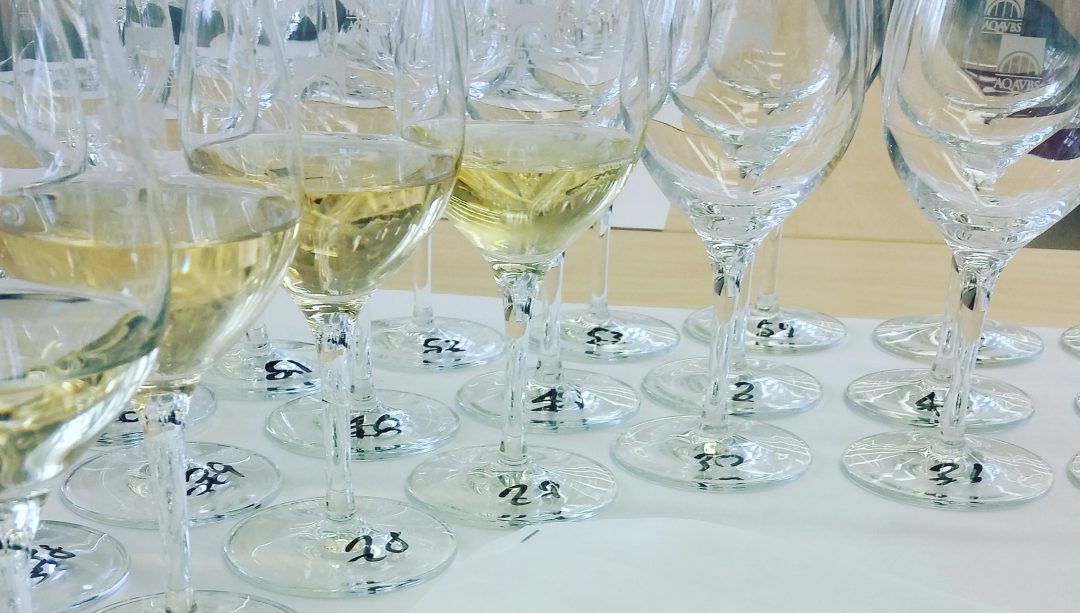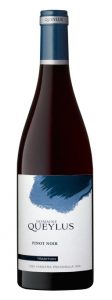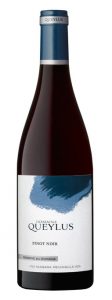Photo credit: Claude Rigoulet
Now that you have had a week-end to go out and taste test the 10 great value sparkling wines I offered up last week (if not, click here), it’s time to double down. Yes folks, today’s recommendations get a little pricier! I have, however, restricted the list to wines under 75$, to keep them within attainable gift-giving limits.
So, is it really worth spending 20$ to 50$ more? The short answer: YES!
That is not to say that all higher priced bubblies are better than their more affordable counter-parts. There are many excellent, small sparkling wine houses that are far superior to some of the major producers. There are also glaring examples of big brand Champagnes that are priced way over their true value.
I simply mean that a serious step up in complexity, elegance and finesse often comes when you lay down a couple of extra twenties.
Why is this?
It all comes down to terroir and winemaking techniques.
When making premium quality wine, grapes are generally sourced from the best vineyard sites, with ideal micro-climates, optimal sun exposure, mature vines, and highly prized soil compositions.
For instance, in Champagne the best Chardonnay grapes are said to come from the eastern-facing slopes of the Côte des Blancs. Experts will tell you that the chalky soils here give very fresh, light, elegant whites. The best Pinot Noirs are puported to hail from the western and northern flanks of the Montagne de Reims. Fragrant, robust reds are produced from the limestone soils here.
The grapes are harvested within very specific ripeness parameters to yield wines with the right balance of vibrant acidity and bright fruit flavours. Careful sorting in the vineyards and winery ensures that only perfectly healthy grapes make the cut.
The majority of premium-priced sparkling wines, including all the ones reviewed below, are made following the traditional method. Much of their complexity, and the key to what makes each wine unique, comes from these 3 key factors:
The blending. In traditional method sparkling wine production, blending is a complex process! The intial winemaking step, is the fermentation of grapes to yield a dry, still wine (aka “base wines”). Producers regularly keep back a percentage of each seasons’ base wine to age in their cellars. Non-vintage sparkling wines are a combination of the newly fermented dry wine from the years’ harvest, and older base wines from previous vintages. These matured wines are called “réserve wines”.
Réserve wines bring added nuance, especially in poor vintages! Depending on the age of the réserve wines, and how much is used in the blend, they can add interesting flavours of grilled nuts, dried fruits, and earthy notes. Once the winemaker feels he has achieved the right balance of fresh and matured nuances in his blend, the wine will be bottled to undergo its secondary fermentation.
The maturation. Premium sparkling wines tend to be aged on their lees for many years. This long cellaring period has several advantages. Firstly, as previously explained, they take on a powerful autolytic character (bakery/patisserie-type aromas, rich, creamy texture, and very fine, well-defined bubbles). Secondly, extended bottle ageing gives the various structural components of the wine time to fully integrate. Acidity softens, firm structure mellows, and flavours harmonize.
The dosage. Once the cellar master determines that the lees-ageing period should come to an end, a complex process takes place to move the yeast sediment to the top of the bottle so as to be expelled. The bottles are briefly opened, the lees are removed (aka disgorged), and the bottle space is filled with a mixture of wine and sugar called the “liquer d’expedition”.
The majority of traditional method sparkling wines today are “brut”, meaning that they have up to 12g/L residual sugar. A popular new trend is the move towards bone-dry styles such as “extra-brut” (6g/L residual sugar or less), or even “zéro dosage” (with no sugar added).
While you may think that you prefer your wine as dry as possible, know this: 8 – 12g/L residual sugar is barely perceptible against the searing acidity of many sparkling wines. The no/ low sugar styles can appear overly tart and austere to the uninitiated.
There is a wealth of other fascinating reasons why Champagne and other premium sparkling wines are so enticing. I could wax lyrical on the subject all day, but I think the real proof is in the bottle. So without further ado, here are my top 10, premium sparkling wines for this festive season!
Ca’ del Bosco Cuvée Prestige Franciacorta (Italy) – 89pts LW
Chardonnay dominant, with a seasoning of Pinot Noir and Pinot Blanc. Moderately intense, featuring attractive white floral notes, bosc pear and hints of buttery pastry. Very fresh, with vigorous bubbles and a broad, layered mid-palate and dry finish.
Where to buy: LCBO (41.95$), agent: . SAQ (43.00$), agent: Montalvin
Henry of Pelham Carte Blanche Estate Blanc de Blancs 2012 – 91pts. LW
Made from 100% Chardonnay, and aged on its lees for 5 years, this opulent sparkling wine offers a rich texture, and tempting flavours of baked apple, ripe lemon and toast. Wonderfully vibrant acidity and fine, persistent mousse balance the concentrated fruity, toasted core nicely.
Where to buy: LCBO (44.95$)
Champagne Paul Goerg Blanc de Blancs Premier Cru Brut – 92pts. LW
Very elegant for the price, with mineral nuances, white floral notes and orchard fruits on the nose. Crisp and light-bodied, with laser-like focus, and a zesty core of lemon and green apple. Bone dry, with lingering stony minerality.
Where to buy: SAQ (46.25$), agent: AOC & Cie
Champagne Jacquart Brut Mosaïque – 93pts. LW
A richly textured style, blending the three major Champagne grapes: Chardonnay, Pinot Noir, Meunier. Enticing aromas of hazelnut, red apple and brioche on the nose. Medium bodied, with brisk acidity, a creamy, concentrated mid-palate, and very fine, lingering bubbles.
Where to buy: SAQ (47.25$), agent: Univins
Benjamin Bridge Brut 2011 (Nova Scotia) – 88pts LW
Mostly composed of hybrid grapes (capable of surviving our challenging winters), Benjamin Bridge Brut is an incredibly vibrant, citrus-driven sparkling. Searing acidity and vigorous bubbles feature on the light weight palate. A zesty core of ripe lemon and subtle mineral nuances linger through to the clean, dry finish.
Where to buy: LCBO (49.95$). SAQ (49.75$)
Champagne Drappier Brut Nature Zéro Dosage – 92pts. LW
Somewhat restrained, developing tart orchard fruit, hints of red berries, and green almond notes upon aeration. This is a very clean, precise, bone dry Champagne with racy acidity and a long, mineral-laced finish. Well-delineated, elegant bubbles give breadth and elegance to this exclusively Pinot Noir based cuvée. Great choice for oysters!
Where to buy: LCBO (58.95$), agent: Kirkwood Diamond Canada. SAQ (49.75$), agent: Amphora Vins Fins
Champagne Taittinger Brut Réserve – 94pts. LW
This Chardonnay-led blend offers a lot of finesse for the price. Alluring aromas of grilled nuts and toast interweave beautifully with bright red apple and white blossom notes. Incredibly vibrant on the palate, with a firm structure, softened by the smooth, layered texture. The finish is long and wonderfully fresh.
Where to buy: LCBO (61.95$), SAQ (59.75$). Agent: Vins Philippe Dandurand
Charles Heidseck Brut Réserve – 93pts. LW
Charles Heidseck (not to be confused with Piper!) is a rich, golden hued Champagne crafted with 40% Réserve wine. This brings intriguing blend of bright yellow fruits and freshly baked bread, with attractive tertiary notes of dried fruits and toasted almonds. The palate is zesty, medium bodied, and very concentrated, with attractive, persistent bubbles. Bonus (if gift giving or trying to impress guests): the new label is very classy!
Where to buy: LCBO (69.95$), agent: Breakthru Beverage Canada (sold out in QC, enquire with agent).
Louis Roederer Brut Premier – 95pts. LW
One of my perennial favourites, Louis Roederer Champagne never fails to impress. This Pinot Noir and Meunier led blend is highly complex, featuring notes of brioche, delicate red berries, and orchard fruits, underscored by intriguing nutty aromas. Searing acidity, firm structure and vibrant bubbles, are expertly balanced by the rich, creamy texture and concentrated, toasty core.
Where to buy: LCBO (72.95$), agent: Authentic Wines & Spirits. SAQ (70.00$), agent: Le Marchand du Vin
Gosset Grande Réserve Brut – 95pts. LW
Very opulent, hedonistic style featuring equal parts Chardonnay/ Pinot Noir, and a small percentage of Meunier. Highly autolytic in character, with pretty yellow apple, ripe lemon, and ginger spice adding complexity. Zesty and firm on the palate, with a creamy texture, impressive depth of flavour, and very fine, persistent mousse.
Where to buy: SAQ (73.00$), agent: Réserve & Sélection.
(What does LW stand for? Click on my wine scoring system to find out).






